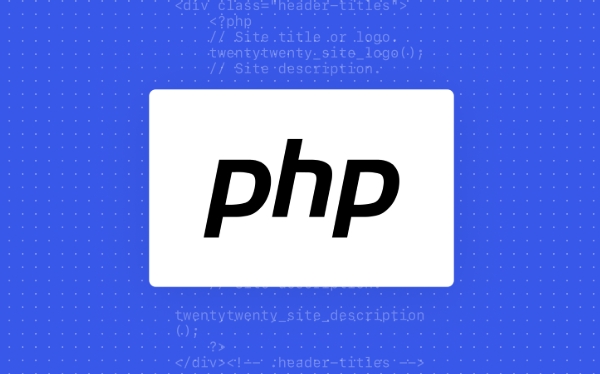 Backend Development
Backend Development
 PHP Tutorial
PHP Tutorial
 From `break` to Functions: A Strategy for Improving Code Testability
From `break` to Functions: A Strategy for Improving Code Testability
From `break` to Functions: A Strategy for Improving Code Testability
Aug 03, 2025 am 10:54 AMWhen you see a break statement in a loop, it often indicates a distinct logic that can be extracted into a function; 2. Extracting such logic improves testability by creating isolated, single-responsibility functions with clear inputs and outputs; 3. This refactoring enables independent unit testing, as seen in examples like contains_item and is_valid_name; 4. Beyond testing, this approach enhances reusability, readability, maintainability, and debugging by promoting modular, composable code design.

Writing testable code doesn’t happen by accident—it’s the result of deliberate design choices. One of the most common obstacles to writing good tests is tightly coupled, linear code that’s hard to isolate. A useful strategy to improve testability starts with a simple observation: any time you see a break statement in a loop, it might be a sign that a piece of logic wants to be a function.

Let’s explore how refactoring code around this idea leads to cleaner, more modular, and ultimately more testable software.
1. The Problem with break and Inline Logic
Consider this typical loop:

items = [1, 2, 3, 4, 5, 6]
target = 4
found = False
for item in items:
if item == target:
found = True
break
if found:
print("Target found!")This works, but the search logic is embedded directly in the control flow. You can’t test the “find item” behavior independently. The break is a clue: it marks the end of a specific intent—“stop when we’ve found what we’re looking for.” That intent should be encapsulated.
2. Extracting Logic into Functions Improves Testability
By extracting the search into a separate function, we make the code more readable and testable:

def contains_item(items, target):
for item in items:
if item == target:
return True
return FalseNow we can write unit tests:
def test_contains_item():
assert contains_item([1, 2, 3], 2) is True
assert contains_item([1, 2, 3], 4) is False
assert contains_item([], 1) is FalseThe function has a single responsibility, clear inputs and outputs, and no side effects. It's easy to test because it’s isolated.
This principle applies beyond simple searches. Any time you use break, continue, or early return inside a loop or conditional block, ask: "Is this a distinct behavior?" If yes, extract it.
3. General Strategy: From Control Flow to Composable Functions
Here’s a practical approach:
- Look for
break,continue, or earlyreturnstatements—they often mark the end of a logical unit. - Name the intent behind the logic (e.g., “find item,” “validate input,” “check permission”).
- Extract that logic into a separate function with clear parameters and return values.
- Replace the inline logic with a function call.
- Write tests for the new function.
Example: validating user input in a loop.
Before:
while True:
name = input("Enter name: ")
if name.strip() and len(name) >= 2:
break
print("Invalid name. Try again.")After:
def is_valid_name(name):
return bool(name.strip()) and len(name) >= 2
# Used in loop
while True:
name = input("Enter name: ")
if is_valid_name(name):
break
print("Invalid name. Try again.")Now is_valid_name() can be tested independently:
def test_is_valid_name():
assert is_valid_name("Jo") is True
assert is_valid_name(" J ") is True
assert is_valid_name("J") is False
assert is_valid_name("") is False4. Benefits Beyond Testing
While testability is the main goal, this approach brings other advantages:
- Reusability: The same validation can be used elsewhere.
- Readability: Code reads like a story—high-level flow calls descriptive functions.
- Maintainability: Fix a bug in one place, not scattered across loops.
- Debugging: Easier to trace and log behavior when functions are small and focused.
Even more complex logic—like parsing, filtering, or state checks—can be broken down using the same pattern.
The presence of a break isn’t inherently bad, but it’s a signal. It often means you’re implementing a decision or search that deserves a name and a home of its own. By turning such logic into functions, you naturally move toward a more testable, modular design.
Basically, if you see a break, ask: “Can I extract this?” More often than not, the answer is yes—and your tests will thank you.
The above is the detailed content of From `break` to Functions: A Strategy for Improving Code Testability. For more information, please follow other related articles on the PHP Chinese website!

Hot AI Tools

Undress AI Tool
Undress images for free

Undresser.AI Undress
AI-powered app for creating realistic nude photos

AI Clothes Remover
Online AI tool for removing clothes from photos.

Clothoff.io
AI clothes remover

Video Face Swap
Swap faces in any video effortlessly with our completely free AI face swap tool!

Hot Article

Hot Tools

Notepad++7.3.1
Easy-to-use and free code editor

SublimeText3 Chinese version
Chinese version, very easy to use

Zend Studio 13.0.1
Powerful PHP integrated development environment

Dreamweaver CS6
Visual web development tools

SublimeText3 Mac version
God-level code editing software (SublimeText3)
 How `break` Simplifies Complex Conditional Logic within PHP Loops
Aug 01, 2025 am 07:47 AM
How `break` Simplifies Complex Conditional Logic within PHP Loops
Aug 01, 2025 am 07:47 AM
Use break to exit the loop immediately when the target is found, avoiding unnecessary processing; 2. Reduce nesting conditions by handling boundary conditions in advance; 3. Use labeled break to control multi-layer nesting loops and directly jump out of the specified level; 4. Use guard clause mode to improve code readability and debugging efficiency, so that the logic is clearer and more complete.
 `break` vs. `continue`: A Definitive Guide to PHP Iteration Control
Aug 02, 2025 pm 04:31 PM
`break` vs. `continue`: A Definitive Guide to PHP Iteration Control
Aug 02, 2025 pm 04:31 PM
break is used to exit the loop immediately and subsequent iterations will no longer be executed; 2. Continue is used to skip the current iteration and continue the next loop; 3. In nested loops, break and continue can be controlled to jump out of multiple layers with numerical parameters; 4. In actual applications, break is often used to terminate the search after finding the target, and continue is used to filter invalid data; 5. Avoid excessive use of break and continue, keep the loop logic clear and easy to read, and ultimately, it should be reasonably selected according to the scenario to improve code efficiency.
 The Performance Implications of Using `break` in Large-Scale Iterations
Aug 02, 2025 pm 04:33 PM
The Performance Implications of Using `break` in Large-Scale Iterations
Aug 02, 2025 pm 04:33 PM
Usingbreakinlarge-scaleiterationscansignificantlyimproveperformancebyenablingearlytermination,especiallyinsearchoperationswherethetargetconditionismetearly,reducingunnecessaryiterations.2.Thebreakstatementitselfintroducesnegligibleoverhead,asittransl
 Mastering Loop Control: A Deep Dive into the PHP `break` Statement
Aug 02, 2025 am 09:28 AM
Mastering Loop Control: A Deep Dive into the PHP `break` Statement
Aug 02, 2025 am 09:28 AM
ThebreakstatementinPHPexitstheinnermostlooporswitch,andcanoptionallyexitmultiplenestedlevelsusinganumericargument;1.breakstopsthecurrentlooporswitch,2.breakwithanumber(e.g.,break2)exitsthatmanyenclosingstructures,3.itisusefulforefficiencyandcontrolin
 From `break` to Functions: A Strategy for Improving Code Testability
Aug 03, 2025 am 10:54 AM
From `break` to Functions: A Strategy for Improving Code Testability
Aug 03, 2025 am 10:54 AM
Whenyouseeabreakstatementinaloop,itoftenindicatesadistinctlogicthatcanbeextractedintoafunction;2.Extractingsuchlogicimprovestestabilitybycreatingisolated,single-responsibilityfunctionswithclearinputsandoutputs;3.Thisrefactoringenablesindependentunitt
 Escaping Nested Loop Hell with PHP's Numeric `break` Argument
Aug 04, 2025 pm 03:16 PM
Escaping Nested Loop Hell with PHP's Numeric `break` Argument
Aug 04, 2025 pm 03:16 PM
Using break's numerical parameters can break out of multi-layer nested loops and avoid using flag variables; for example, break2 can directly exit the two-layer loop, improving code readability and maintenance, and is suitable for scenarios where execution is terminated based on condition in multi-layer loops.
 A Guide to Graceful Termination of Infinite Loops Using `break`
Aug 03, 2025 am 10:02 AM
A Guide to Graceful Termination of Infinite Loops Using `break`
Aug 03, 2025 am 10:02 AM
Usethebreakstatementtoexitinfiniteloopswhenaconditionismet,suchasuserinputortaskcompletion.2.Pairbreakwithclear,meaningfulconditionstoensureloopsremainreadableandresponsive.3.Avoidoverusingbreakbyemployingflagvariablesforcomplexlogictomaintaincodecla
 PHP `break`: A Code Smell or a Necessary Control Structure?
Aug 04, 2025 am 11:01 AM
PHP `break`: A Code Smell or a Necessary Control Structure?
Aug 04, 2025 am 11:01 AM
breakisappropriateinswitchstatementstopreventfall-throughandinloopstoexitearlyforefficiency,suchaswhenamatchisfound;2.itbecomesacodesmellwhenusedindeeplynestedloopswithbreak2orhigher,orwhensimulatingearlyreturnsforerrorhandling,indicatingpotentialdes





